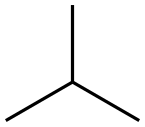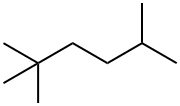
2,2,4-Trimethylpentane synthesis
- Product Name:2,2,4-Trimethylpentane
- CAS Number:540-84-1
- Molecular formula:C8H18
- Molecular Weight:114.23

107-01-7
43 suppliers
$25.00/10g

75-28-5
132 suppliers
$40.00/1g

540-84-1
398 suppliers
$17.00/25ML

3522-94-9
47 suppliers
$65.00/1g
Yield:-
Reaction Conditions:
with Cu(1+)*AlCl4(1-)=CuAlCl4;triethylammonium tetrachloroaluminate at 9.84; under 3000.3 Torr; for 0.5 h;Reagent/catalyst;Temperature;
Steps:
Procedure and analysis
Isobutane and 2-butene were commercial products from China National Petroleum Corporation (CNPC) with 99% purity and used without further purification. Alkylation reactions were carried out in a liquid-phase pressure vessel (100 mL) with a liquid inlet. A mechanical stirrer with a fixed impeller on the shaft provided agitation at 1200 r/min. The catalyst (e.g., 15 mL) was put into the reactorat first. After stirring, the liquid feed (a mixture of isobutane/2-butene in a 7.5:1 molar ratio) was charged into the reactor by meansof a plunger pump at a rate of 500 mL/h. The reaction temperature was controlled at 298 K by a water bath with temperature controller. When the pressure of the reactor was higher than 0.4 MPa, we stopped the pump and stirrer. The total reaction time was about 30 min. The product and catalyst were decanted from the reactor and settled for 30 min. The product was fractionated to remove isobutane and distilled in a Claisen flask. Aliquots of the hydrocarbon phase were withdrawn for analysis.
References:
Liu, Ying;Li, Rui;Sun, Hongjuan;Hu, Ruisheng [Journal of Molecular Catalysis A: Chemical,2015,vol. 398,p. 133 - 139]

115-11-7
243 suppliers
$45.00/25g

540-84-1
398 suppliers
$17.00/25ML

75-28-5
132 suppliers
$40.00/1g

115-11-7
243 suppliers
$45.00/25g

540-84-1
398 suppliers
$17.00/25ML

107-39-1
127 suppliers
$36.00/25mL

540-84-1
398 suppliers
$17.00/25ML